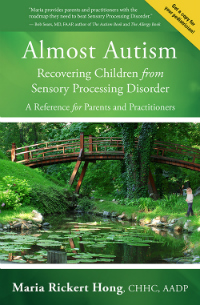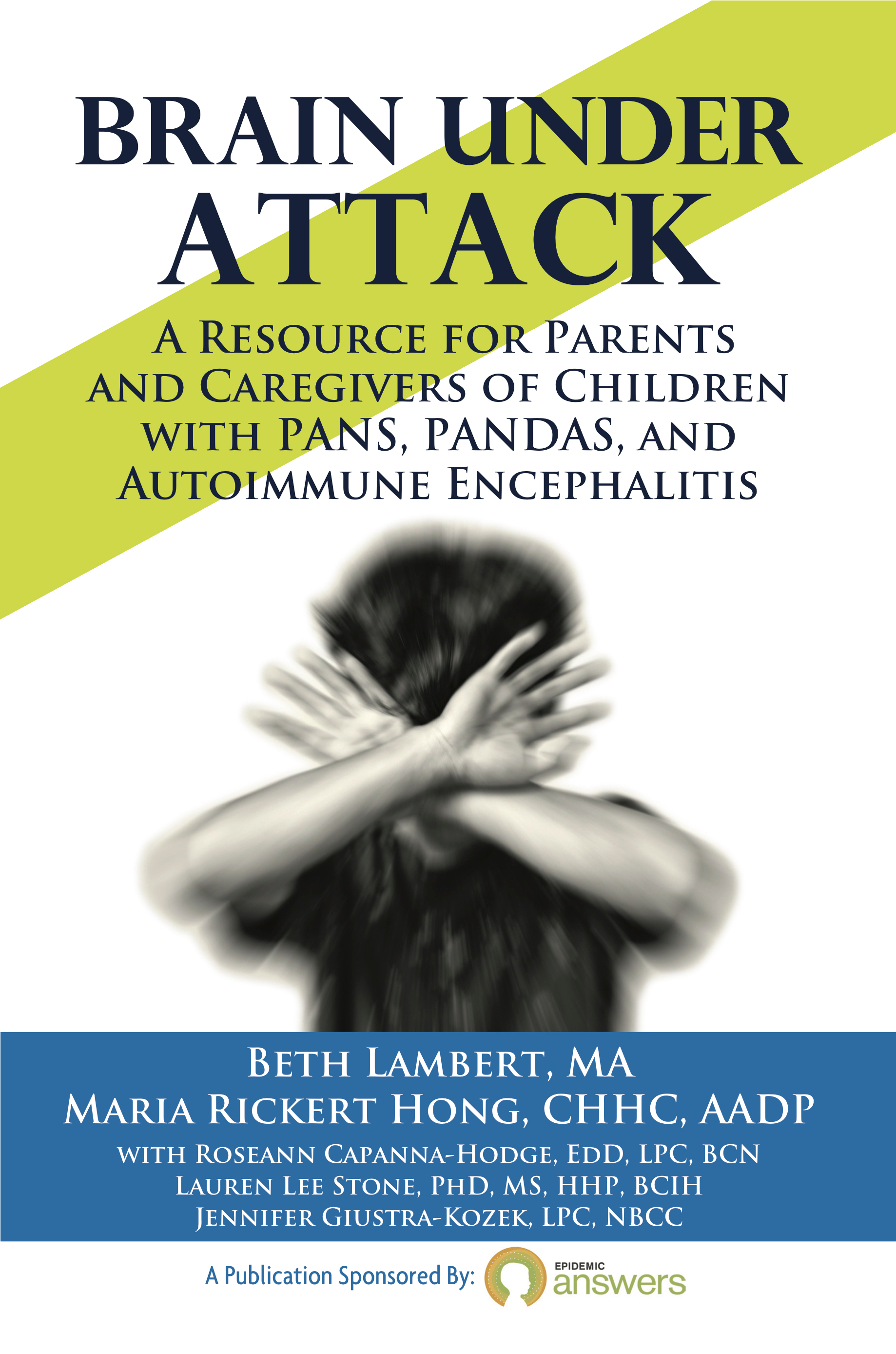 My older son with sensory processing disorder (SPD) benefited greatly from going to a land-based occupational therapist (OT) for six months. I asked her what we should do about him learning to swim, given that he had such a bad experience with it when he was 2 years old.
My older son with sensory processing disorder (SPD) benefited greatly from going to a land-based occupational therapist (OT) for six months. I asked her what we should do about him learning to swim, given that he had such a bad experience with it when he was 2 years old.
You might remember that he was so overwhelmed by the lights, sounds, the way the water felt, and his gravitational insecurity in the water that one day after class he came home and wiped down half the kitchen to relieve his stress. That’s a pretty strong reaction from a toddler.
Aquatic Occupational Therapy
The land-based OT recommended an aquatic OT at Angelfish Therapy, whom we began using initially in private sessions after his dismissal from the land-based OT.
From their website: “Aquatic therapy takes place in the water, which is a combination of OT and PT (physical therapy), muscle strengthening, coordination, motor planning, endurance, body awareness and sensory integration.”
She (the aquatic OT) didn’t give a formal, written evaluation, but, after working with my son a few times, said that he had a couple of retained reflexes that were interfering with his ability to swim. She explained that, as part of typical development, babies naturally inhibit these reflexes, but damage to the central nervous system can cause these reflexes to fail to be inhibited.
Retained Moro Reflex
First of all, the aquatic OT said that he had a retained Moro reflex, the one in which a baby reacts involuntarily to a threat.
From the book, “Reflexes, Learning and Behavior: A Window Into The Child’s Mind: Non-Invasive Approach to Solving Learning & Behavior Problems” by Sally Goddard (a book I highly recommend): “The Moro reflex…is essentially a ‘grasping’ reflex, analogous to the one seen in young apes who instinctively cling to their mothers.”
It is also known as the “fight, fright or flight” response and “may be triggered occasionally in later life in situations of extreme danger. …It facilitates the first ‘breath of life’ at birth and helps to open the windpipe if there is threat of suffocation.”
A light bulb went off in my head as I remembered the birth trauma that my son experienced. To this day, it’s not clear why the delivery team couldn’t find his heartbeat or why he went into fetal distress, but, for whatever reason, the team discovered that he had released meconium during labor.
Upon delivery, the sticky meconium in his lungs prohibited him from breathing, and his lungs had to be suctioned. His one-minute Apgar score was 5, which is a fairly low reading. Maybe this trauma had caused him to retain his Moro reflex.
In any case, it now made sense why he had so much anxiety and would cry all the time about everything. His “fight or flight” response couldn’t shut off, so there was an almost constant release of adrenaline and cortisol being released because he felt so out of control and overwhelmed. Poor baby!
Now I really felt guilty for yelling at him those times when his constant crying got to me; it really wasn’t something he could control!
Sally Goddard writes, “If the Moro reflex fails to be inhibited at 2-4 months of life, the child will retain an exaggerated startle reaction which may result in continued hypersensitivity in one or several sensory channels, causing him to over-react to certain stimuli.
“Sudden noise, light, movement or alteration of position or balance – any of these – may elicit the reflex at unexpected moments, so that the child is constantly ‘on alert’ and in a heightened state of awareness.
“Such a child may present a paradox – acutely sensitive, perceptive and imaginative on the one hand, but immature and over-reactive on the other. He may cope in one of two ways: by being the fearful child who ‘withdraws’ from situations, has difficulty socializing, and can neither accept nor demonstrate affection easily (yep, that was him).
“On the other hand, he may become the over-active, aggressive child, who is highly excitable, cannot read body language, and who needs to dominate situations.”
Sally Goddard lists the long-term effects of a retained Moro reflex:
- “Vestibular related problems such as motion sickness (yes), poor balance (yes) and coordination (yes), particularly seen during ball games
- Physical timidity (yes)
- Oculomotor and visual-perceptual problems
- Poor pupillary reaction to light, photosensitivity, difficulty with black print on white paper. The child tires easily under fluorescent lighting. (Now I knew why grocery shopping with him at a large, brightly lit grocery store stressed him out so much.)
- Possible auditory confusion resulting from hypersensitivity to specific sounds. The child may have poor auditory discrimination skills, and have difficulty shutting out background noise.
- Allergies and lowered immunity, e.g., asthma (yes), eczema (yes), or a history of frequent ear, nose and throat infections (yes)
- Adverse reactions to drugs
- Poor stamina (yes)
- Dislike of change or surprise – poor adaptability (yes)
- Poorly developed CO2 reflex
- Reactive hypoglycemia (yes)”
She also lists possible secondary psychological symptoms:
- “Free floating anxiety – ‘Angst’ (continuous anxiety seemingly unrelated to reality) (yes)
- Excessive reaction to stimuli
- Mood swings – labile emotions (yes)
- Tense muscle tone (body armoring)
- Difficulty accepting criticism, as this child finds it so difficult to change (yes)
- Cycle of hyperactivity followed by excessive fatigue (yes)
- Difficulty making decisions
- Weak ego, low self esteem
- Insecurity/Dependency (oh, yes)
- Need to ‘control’ or ‘manipulate’ events” (oh, yes)
Retained Symmetrical Tonic Neck Reflex
Second of all, the aquatic OT said my son also had a retained symmetric tonic neck reflex (STNR), which should emerge between 6 and 9 months of age and is typically inhibited by 9 to 11 months of age.
This reflex causes the arms to bend and the legs to extend when the head is bent towards the body and causes the opposite reaction in which the legs bend and the arms straighten when the head is extended towards the back of the body.
“The baby will be at the mercy of its head movement, unable to move effectively because during this period of development the position of the head decides the position of the limbs.”
She also says that “children who retain the STNR rarely crawl on hands and knees” or, if they do crawl, the “may do so in an unusual fashion”. If only I had known this when my son was a baby!
He slithered backwards at 8 months of age, military (army) crawled until 18 months of age, and cross-crawled for less than a month before he started to walk at 20 months of age.
Sally Goddard writes that cross-crawling (“creeping”) “is one of the most important movement patterns in the prolonged process of teaching the eyes to cross the midline. In addition to looking ahead, babies also learn hand-eye coordination from the movement of the hands.
“It is through creeping that the vestibular, proprioceptive and visual systems connect to operate together for the first time. Without this integration there can be a poorly developed sense of balance and poor space and depth perception.
The focusing distance and hand-eye coordination skills used in the act of creeping are at the same distance that the child will eventually use for reading and writing. …A high percentage of children with reading difficulties omitted the stages of crawling and creeping in infancy.”
You can see how critical the inhibition of this reflex through cross-crawling is to the child’s future learning ability!
Now imagine this reflex being retained in an older child: swimming is almost impossible because the top and bottom halves of the body can’t successfully coordinate, while any kind of sport, especially ball games, is a disaster because the child can’t coordinate head and eye movements. This child is typically clumsy.
In addition, Sally Goddard writes that “a retained STNR was found to be present in 75% of a group of learning disabled children” and that it is also found to “be a significant factor in children with ADD and ADHD”.
Imagine how many children could be taken off of Ritalin if they received proper OT at the proper age of development! As I’ve written before, though, the earlier these interventions occur, the greater the benefit to the child.
Here are the symptoms that she writes are “suggestive of a strongly residual symmetrical tonic neck reflex:
- Poor posture
- Tendency to ‘slump’ when sitting, particularly at a desk or table. (‘This is the child who ends the lesson almost lying on the desk in order to write.’)
- Simian (ape like) walk
- ‘W’ leg position when sitting on the floor (my younger son does this all the time)
- Poor hand-eye coordination
- Messy eater
- ‘Clumsy child’ syndrome
- Difficulties with readjustment of binocular vision (Child cannot change focus easily from blackboard to desk)
- Slowness at copying tasks
- Difficulty learning to swim, or unsynchronized movements when swimming above the water. (Often children with a retained STNR swim better under the water where the effect of gravity is reduced and the weight of the water keeps the body level)
- Can affect attention as a result of discomfort sitting in one position”
From another of her books, “The Well Balanced Child: Movement and Early Learning”, she states some of the following effects of a retained STNR:
- “Poor upper and lower body integration;
- Hypotonia (predominance of floppy muscle tone);
- Poor hand-eye coordination when movements toward and away from the self are required, such as catching a ball and eating;
- Judging speed and timing of fast-approaching objects;
- Vertical tracking
There are other retained reflexes that my sons didn’t have:
- Palmar reflex
- Assymetrical tonic reflex
- Rooting reflex
- Spinal galant
- Tonic labyrinth reflex
Symptoms of these can range from:
- Fidgeting
- Bedwetting
- Poor concentration
- Speech difficulties
- Poor manual dexterity
- Difficulty crossing the midline
- Poor balance
- Poor organization skills
If your child has any of these symptoms, it’s worth getting an evaluation from an OT.
My older son worked with the aquatic OT for about a year and a half for “neuromuscular reeducation” while my younger son, whose retained reflexes weren’t quite as severe, worked with another one for 4 months.
This therapy wasn’t cheap, but I strongly believe that this kind of intervention will pay off huge dividends in both sons’ social abilities, learning abilities, sports abilities (not that sports was the driver for receiving therapy), and, ultimately, happiness.
Sign up for free access to my monthly webinar, in which you can ask health experts your own questions!



All three of my children suffer from retained reflexes. Trying to explain the type of learning difficulties to their teachers is mind numbing. After reading Sally Goddard’s book and becoming certified in Brain Gym this subject gas become a passion of mine. I am working very hard to help my children as I’m sure you are. It is comforting to know that someone else gets it because so few do.